I've used the following way to create 3 histograms. The 4th one has suddenly a reverse order on the x-axis. However, there's nothing (at least nothing I know about) in the snippet that should affect the order.
The x-axis is expected to start with the lowest value on the left.
Here's the R code:
df <- mydata %>% mutate(length.class=cut(mydata$count,breaks = c(1,10,100,1000,10000,100000,1000000,10000000),include.lowest=TRUE,dig.lab=8)) %>% group_by(length.class) %>% summarise(count = n())
dftext <- as.data.frame(table(df$length.class))
colnames(dftext)[1] <- "x"
dftext$lab[dftext$x == "[1,10]"] <- 1063393
dftext$lab[dftext$x == "(10,100]"] <- 65986
dftext$lab[dftext$x == "(100,1000]"] <- 3206
dftext$lab[dftext$x == "(1000,10000]"] <- 386
dftext$lab[dftext$x == "(10000,100000]"] <- 32
dftext$lab[dftext$x == "(100000,1000000]"] <- 0
dftext$lab[dftext$x == "(1000000,10000000]"] <- 1
df$count[df$length.class == "(1000000,10000000]"] <- 1.1 // To make its bar visible
fmt <- function(decimals=0){
function(x) format(x,scientific = FALSE)
}
ggplot(df,aes(length.class,count)) + geom_bar(stat = "identity",width=0.9,fill="#999966") + scale_y_log10(labels = fmt()) + labs(x="", y="") + geom_text(data=dftext, aes(x=x, y=2, label=lab), size = 6) + theme(text = element_text(size=20)) +
theme(axis.line = element_line(colour = "black"),
panel.grid.major = element_line(color = "grey"),
panel.grid.minor = element_line(color = "grey"),
panel.background = element_blank(),
axis.title.x = element_text(margin=margin(t = 15, unit = "pt")),
axis.text.x = element_text(angle = 45, hjust = 1))
What is causing the reverse order and how can I get rid of it?
Edit: You guys are fast! :) The answer of @mark-peterson looks pretty solid, however I didn't get any working results with it though. Here's the requested data: mydata.csv


